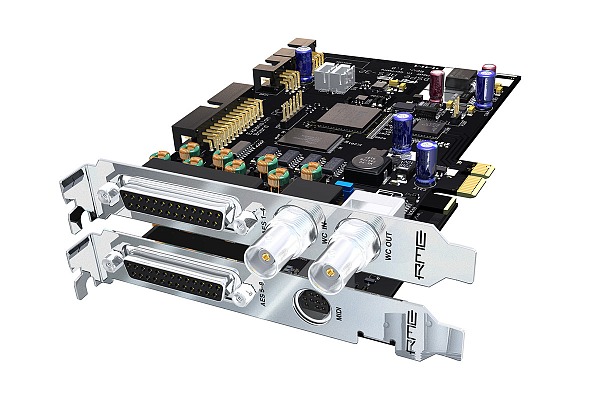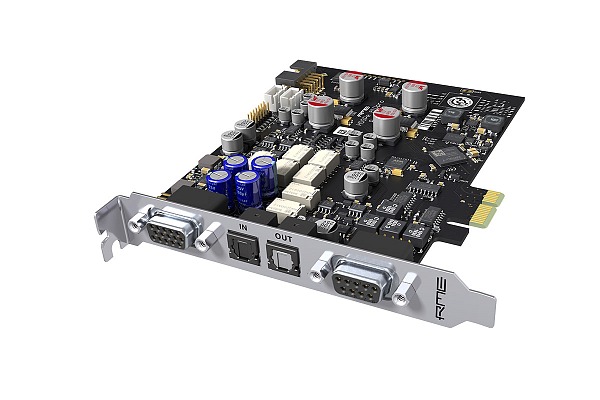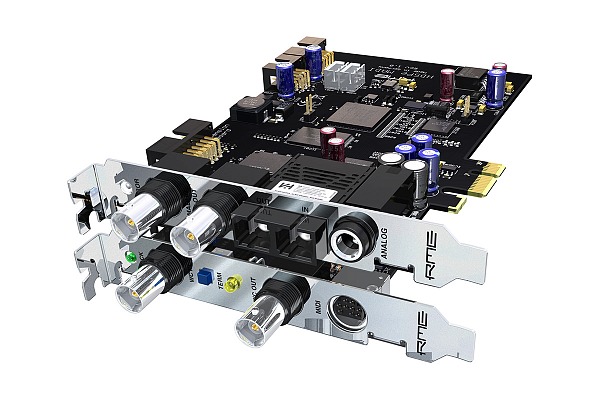RME
HDSpe AoX
512-channel, 4x MADI
PCI Express Card series
with Dante or Milan-compatible AVB
The PCIe x4 audio interface cards HDSPe AoX (AVB) and HDSPe AoX-D (Dante) feature two network connections with headphone output, AES3, MIDI, SteadyClock™ for all digital input signals, and internal expansion options for up to four optional MADI connections. These cards are compatible with Thunderbolt expansion housings and DAWs, as well as audio processors. The cards can send and receive up to 512 audio channels and offer numerous mixing and routing options via TotalMix.
Compared to this huge number of channels, the ¼" stereo headphone jack takes up a lot of space on the card - for good reason, as it allows you to monitor any signal coming into the card, be it from the computer, the network, or the optional MADI inputs. If you want to add another signal to the mix, there are AES3 stereo digital I/O and MIDI via a breakout cable, making the card a versatile, full-featured professional interface.
Features
The single-slot PCIe x4 interface sends and receives up to 512 network audio signals via two separate RJ45 connectors. The network audio channels can be partially replaced by MADI signals (or extended in the case of the Milan® version) by adding up to two optional dual optical or dual coaxial expansion cards. This makes it possible for the first time to integrate four MADI inputs, four MADI outputs and up to 256 network audio channels per direction into a single audio interface - under macOS and Windows.


Connectivity
- PCIe I/O: 512/256/128 channels at 48/96/192 kHz sampling rate
- 1x stereo headphone output, 1⁄4" TRS
- 4 x MADI I/O (coaxial BNC & optionally available optical SFP module)
- AES3 I/O via DB9 to XLR breakout cable
- 2 x RJ45 1 GigE
- Wordclock I/O (BNC)
- MIDI I/O via DB9 to 2x DIN breakout cable
Flexibel mischen und routen mit TotalMix
The large number of channels can be managed by the user in two steps. Using a driver dialog or a web interface, the user first sets the number of network or optional MADI channels, and then selects which inputs reach the 256-channel TotalMix Engine. The remaining 256 channels are passed through directly. All 512 channels are visible for recording in the DAW. TotalMix offers basic functionality without effects, but with all the great benefits of presets, layouts, loopback, submixes, and more.
The card can be installed in external Thunderbolt™ enclosures as a perfect addition to mobile recording setups, or integrated into popular DAWs or audio processors.







